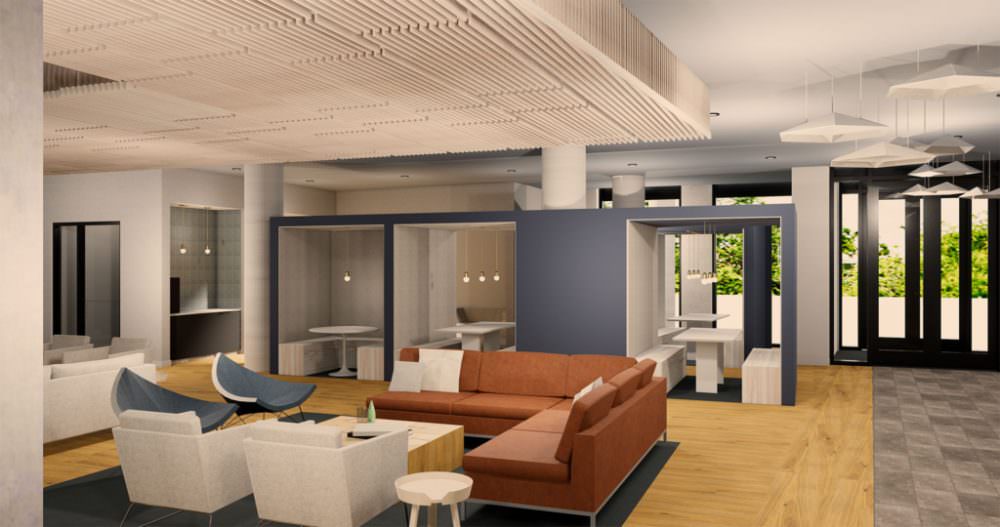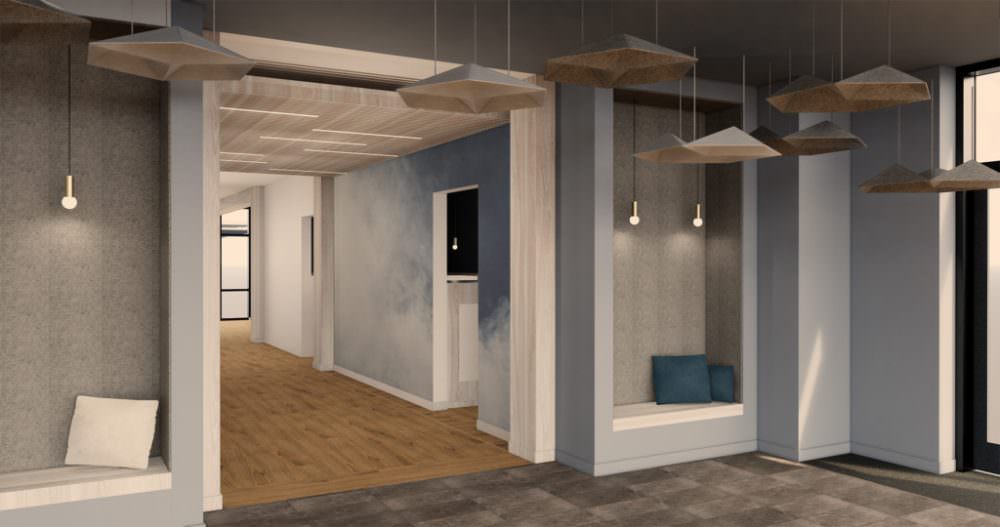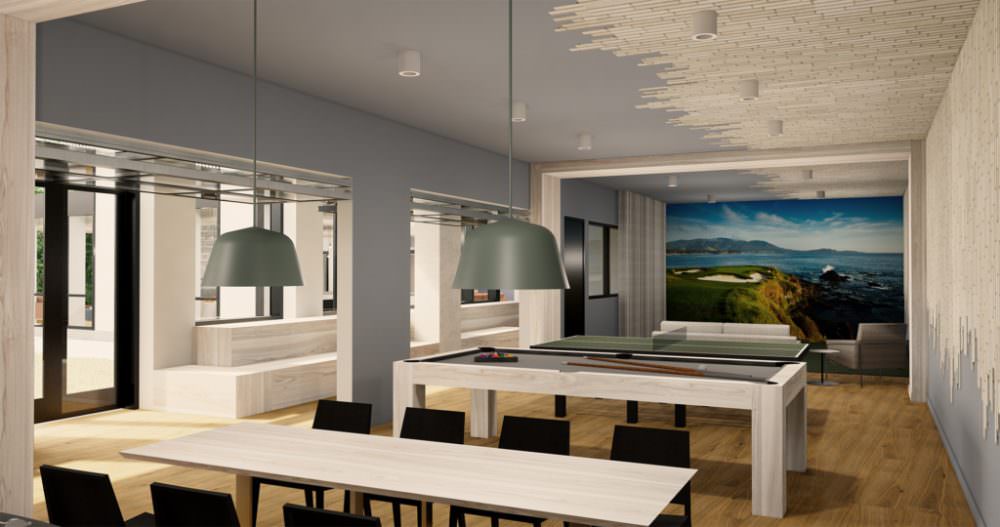Long gone are the days when student housing was synonymous with run-down, dilapidated, and mismanaged apartments. Students today are demanding extra amenities that will enhance their living experience, making today’s student housing model very similar to traditional market-rate apartments. While student housing is aligning more closely with market-rate apartments, there are some key differences in the amenities and services that students find desirable and can have a significant impact on a project’s success.
Homework
The most desirable amenity in student-focused apartments are study spaces. Not surprising, right? Students today want a variety of study space options, ranging from more social open lounge spaces to single user study rooms where they can tuck away and focus. We think of these study areas as similar to co-working spaces like WeWork, which offer casual lounge spaces of cozy chairs and sofas, as well as fully enclosed conference rooms.
For our Trailside student housing project near the University of Washington, we designed a series of study pods that would provide semi-enclosed study spaces with built-in tables and banquettes, so users could work in a group or use the spaces individually. The connection to the more social fireside lounge space makes the study pods desirable, as one can feel enclosed and protected while also being able to feel connected to whatever events are unfolding in the lounge. Similar to a coffee shop setting, study spaces do not need to be completely quiet and enclosed to be effective.

Schematic rendering of the study pods at Trailside
However, it is also important to provide some study spaces that are enclosed and private for those times when students need to buckle down and minimize distractions. We tried to encompass as many glassy, fully enclosed study rooms as possible in the Trailside project to accommodate private study time as well. The rooms are reservable through an online calendar to allow equal access to all residents.
Providing variety in the scale of study spaces is also critical. While the study rooms lend themselves more to groups of 2-4 students, it is also important to provide spaces where students can study by themselves, which is the most common study scenario. Upholstered lounge chairs, community study tables, built-in benches and study counters all work well for individual study sessions.

Schematic rendering of built-in study benches at Trailside
P.E.
Other amenities that students value are fitness rooms and gyms. Fitness rooms can include all of the traditional gym equipment such as cardio machines, weights, and stretching mats, but equipment tailored to specific types of popular workout sessions such as CrossFit or spin classes can differentiate one gym from another. Trailside includes an AstroTurf area for CrossFit-like weight sessions, as well as a separate room for fitness on demand, which is a virtual workout system where students can access any type of workout at any time of day. Customizing fitness areas to meet current workout trends and technological conveniences can make them more appealing to today’s students.
After School Sports
Game rooms are another desired amenity. These active, dynamic social hubs often feature ping pong tables, pool, and shuffleboard, among other options. An extra special game room feature we are including in the Trailside project is an indoor golf simulator, something that I have not seen installed in any student or market-rate rental housing in Seattle. The connection between game rooms and students is clear – students need social spaces that allow them to hang out with friends and decompress from the many stresses of being a student.

Schematic rendering of the game room and indoor golf simulator at Trailside
Extracurriculars
Pet accommodations, party rooms and outdoor spaces, all most commonly seen in market-rate housing are also in high demand by students. Rooftop off-leash and dog piddle patch areas, as well as a dog wash room are being incorporated. Party/community rooms often combine a kitchen with a media area where groups can gather to eat, cook, watch TV, play board games and be social. With the apartments’ small size, having access to a large roof deck or courtyard feels like an expansion of personal living space even in Seattle where the weather doesn’t always cooperate. In decent weather, these areas offer additional places to work out, be social, and to study. A roof deck with a killer view is something that will never get old.
Student housing is quickly evolving. Students are demanding high-quality options and are prioritizing factors such as location and amenities when choosing where to live. Study spaces, as well as unique amenity features tailored to today’s students, are highly valued and can be the tipping point that makes someone choose to live in one apartment over another, or choose off-campus housing over on-campus housing. Developers in Seattle have been upping their game to offer premium living options for students – a trend we are sure to see continue into the future.